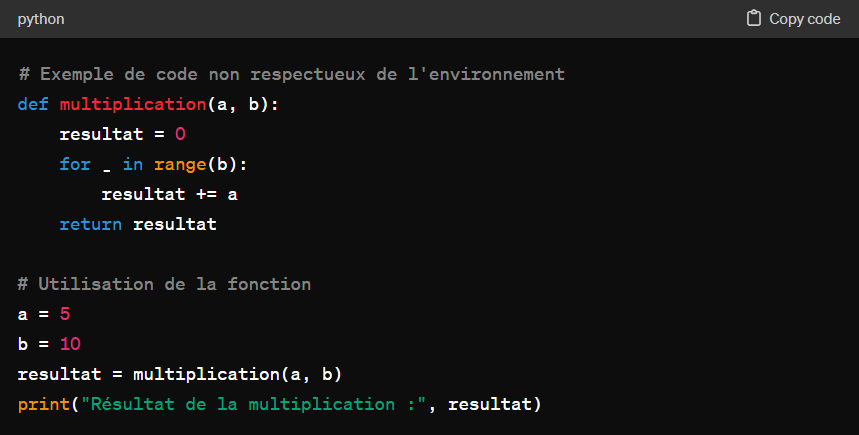In an ever-changing world, two social issues are regularly at the center of debate: the decline of the environment and the rise of new technologies in the service of productivity. And it’s not the companies that are going to say otherwise.
Today, faced with ever fiercer competition, they are also increasingly aware of CSR issues, notably through the actions of their employees and through public action.
It’s against this backdrop that the concept of Green Coding is emerging as a response to today’s challenges. But what exactly is Green Coding? Green Coding refers to the adoption of environmentally-friendly programming practices aimed at reducing the carbon footprint of software and applications.
Green Coding: a logical evolution in the face of today’s challenges.
Companies see data as a valuable asset, providing essential insights for understanding customers, optimizing operations and making rational decisions. With the development of digital technologies in particular, the volume of data collected has exploded. Its analysis process has therefore naturally evolved over time.
In the early days of data processing, information was collected by eye and entered directly on paper. This time-consuming process has been replaced by the spreadsheet era, epitomized by Excel. This made it easier to handle the data, but he found himself limited when faced with the new volume. The arrival of programming languages such as Python has solved this problem, but has also given rise to a new one: the energy consumption of data processing.
Today, we’re entering phase 4 of this evolution: Green Coding, where efficiency and sustainability meet to reduce our carbon footprint.
Green Coding: its importance and how companies are implementing it.
Green Coding is crucial in the fight against climate change. In fact, according to a recent study, data centers and information technologies account for around 2% of global greenhouse gas emissions – as much as the airline industry. Other figures: in 2021, Green Coding saved more than 100 billion kilowatt-hours of electricity worldwide, reducing CO2 emissions by almost 90 million tonnes – the equivalent of taking more than 19 million cars off the road for a year. (source: Maltem).
By adopting Green Coding practices, companies can significantly reduce their energy consumption and CO2 emissions.
These practices include :
- The use of eco-responsible equipment in data centers
- Raising developers’ awareness of the importance of sustainability in their work
- Responsible use of data: limiting the amount of data transferred and stored.
- Network optimization: reduce the number of requests, compress data and use caching algorithms.
- Measurement and monitoring: monitor code energy efficiency and processor utilization with, for example, Python libraries such as ‘psutil’ or ‘py-cpuinfo’.
- Energy efficiency: writing energy-efficient code by optimizing algorithms, thus minimizing the use of resources such as CPU, memory and storage.
In the following section, we’ll focus on the latter practice and show you how simple Python code can be considered un-eco-friendly.
An example of environmentally unfriendly Python code…

In this example, the ‘multiplication’ function involves multiplication using a ‘for‘ loop. However, this method can be inefficient for large values of b, as it performs repeated additions, which can consume a lot of resources.
In this ‘for’ loop, we use _ as a temporary loop variable which is generally used when we don’t need to use the variable’s value in the loop.
This means we execute the code block ‘resultat += a ‘ ‘b’ times. In other words, we add the value of ‘a’ to ‘resultat’ ‘b ‘ times.
Let’s take a concrete example:
Assume a = 3 and b = 4.
The loop will run 4 times (as range(b) generates a sequence of numbers from 0 to 3) and at each iteration, ‘resultat’ will be increased by a. So, after the loop, ‘resultat ‘ will contain 3 + 3 + 3 + 3 = 12.
… which can easily be improved using AI.

The result is as follows:

Green Code therefore offers multiple benefits: reducing the carbon footprint of IT, optimizing resources, and aligning business objectives with environmental imperatives. It’s a real opportunity to create a positive impact while remaining competitive in the marketplace.





